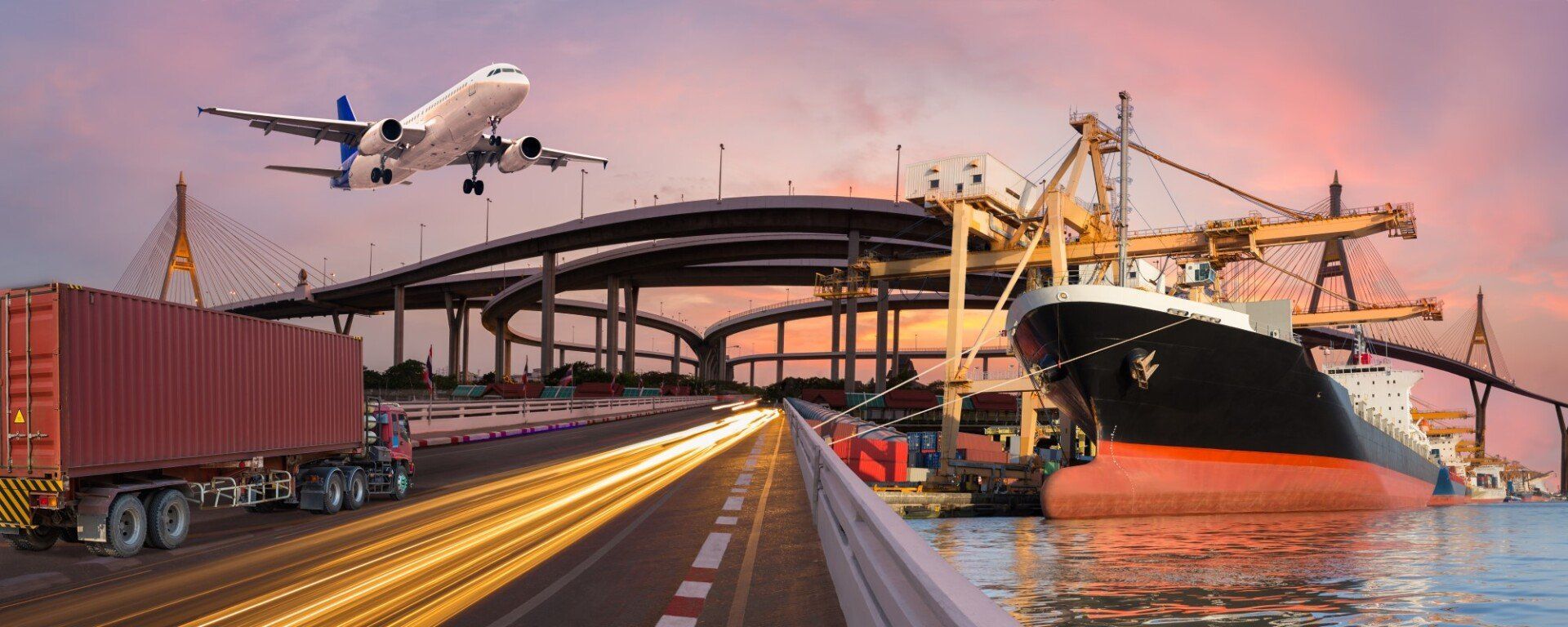BLOG
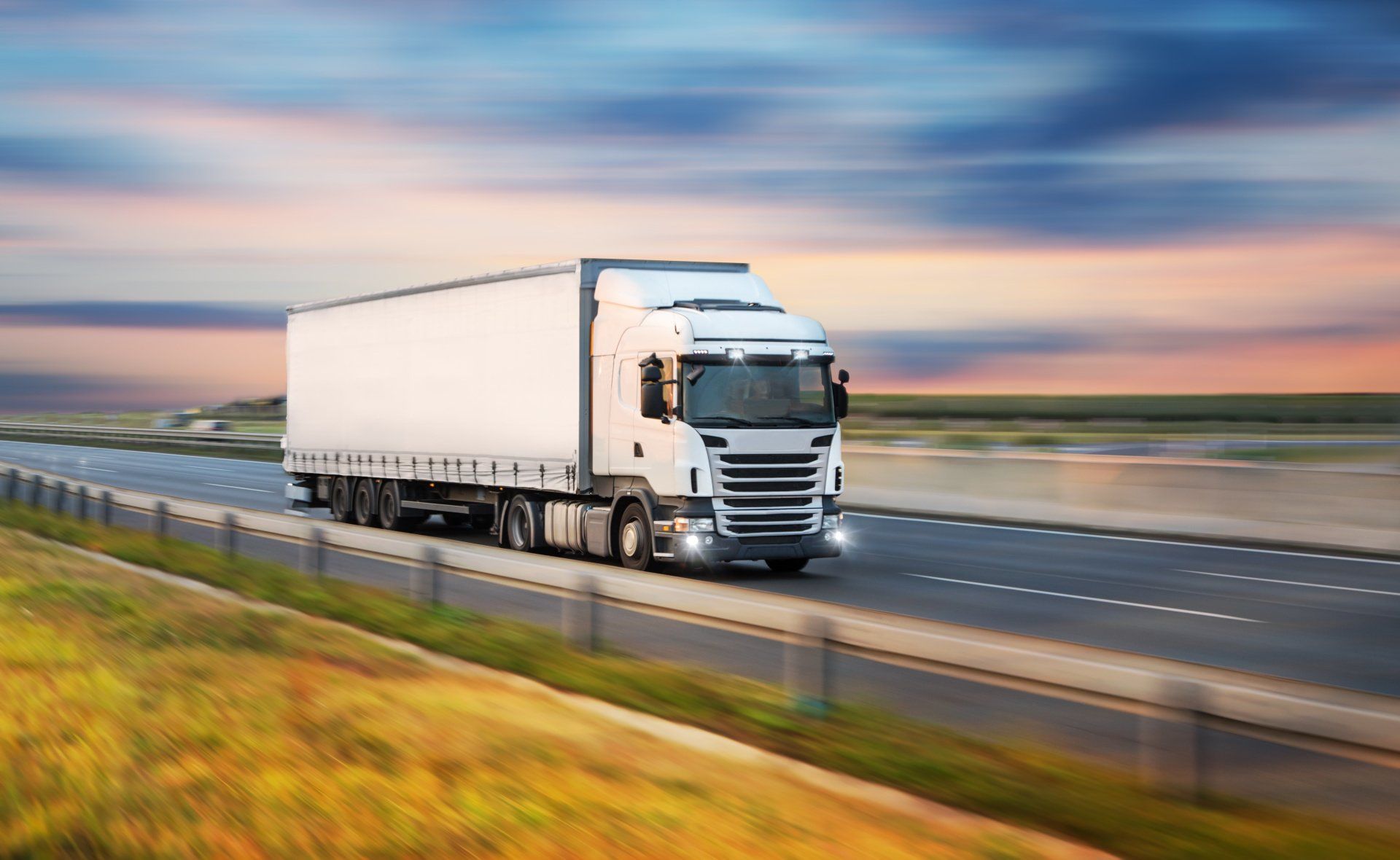
A large portion of domestic goods is transported via land and truck. The trucks drivers see on the highways are carrying valuable cargo from one U.S. city to another. Several industries make use of large commercial trucks for the distribution and delivery of their goods. The United States’ day-to-day operations are significantly dependent on truckers. The industry is responsible for millions of jobs and generates hundreds of billions of dollars in annual revenue. From gasoline to gallons of milk, truckers play an essential role in the lives of everyday Americans. Goods are not the only cargo carried via trucks of course. Big trucks also transport heavy equipment, machinery, other vehicles, and more. Let’s dive into some of the innovative work the trucking industry is working towards and key changes in the year 2021.
A Few Eyebrow Raising Facts about the U.S Trucking Industry
In 2019, for example, the trucking industry moved about 71% of all freight in America. And that’s not all, the amount of revenue generated by this industry cannot be overstated. When put another way, the industry brought in about $700 billion , which is more than the entire GDP of Bangladesh and slightly less than the entire GDP of the country of Columbia.
But wait, there’s more.
-
As Business Insider reported, almost 6% of all full-time jobs in America are related to the trucking industry. In 2018, The Bureau of Labor Statistics reported 129 million full-time jobs in the country. That same year 7.4 million people were working full time in the trucking industry.
-
According to the American Trucking Association, almost every good consumed within the nation’s borders is put on a truck at some point or another. This translates to about 72.5% of all freight transported in 2019 was carried via truck.
-
Most people have some recollection of the toilet paper scare of 2020. In fact, most people might recall the panic buying that led to grocery store shelves emptying in a matter of days. According to some estimates, grocery stores are likely to run out of food after just three days of haul truckers not working.
The Truck Driver Shortage of 2020 and Beyond
As recent as April of 2021, truck driver shortages were reported across the country. This shortage has had a significant impact on the delivery of goods. Some reports attribute the shortage to the pandemic, which has delayed the process of receiving a commercial driver’s license. Obtaining a commercial driver’s license usually takes about 2 months and during the past year has taken up to 6 months. Experts suggest that as more and more truck drivers retire in 2021 and the demand for transportation services increases, the shortage can become a long-term issue.
Trucking Trends for the Upcoming Year: Improvements and Technology
The nation experienced notable shifts due to the coronavirus pandemic. As the way we interacted and purchased goods changed, those changes were reflected in the trucking industry as well. More reported changes in the industry have also been reported:
-
Reduced truckload capacity. As mentioned above, the reduced training of CDL schools operating at the same capacity has resulted in 200,000 fewer drivers. Additional government stimulus may have had an impact on new drivers entering the workforce.
-
Automation is seeping its way into trucking. Automation is not news. Car companies and trucking companies have been experimenting with various levels and kinds of automation for some time. Some trucking companies are implementing solutions for route optimization using AI-powered cloud-based solutions.
-
Using technology for data and analytics. Thanks to the various technological advancements companies also have easier access to data. Many trucking industries are now using data to improve their operations and increase revenue. The data allows them to better create plans and productive drivers, which improves the efficiency of fleets. This is especially useful when there is a driver shortage.
From International Hauling to Plant Relocation, Use the Transportation Services You Trust
In late 2020, Tesla and Space-X CEO Elon Musk announced a plant relocation from California to Texas. Moving an entire operation from one state to another is quite the task and requires the right vehicles and trained drivers. Just like the trucking industry, transportation services to relocate large manufacturing plants also play a big role in U.S. supply chains and production. The trucking industry and the transportation services industry have seen their fair share of challenges this past year, but this has not stopped industry experts from doing great work. Here at KMJ Transportation Services , we continue our work of helping with the essential transfer of heavy cargo and equipment.
Looking for reliable vehicles and transportation services? KMJ has the fleet you’re looking for. For heavy hauling or border crossing, we have you covered. Connect with us today and see how we can help.

Need to transport something heavy across the country? From large vehicles to industrial equipment or other freight, the transportation of oversized loads can be a tricky business. You’ll likely need the help of some heavy hauling equipment and machinery. There are many vehicles out there that claim to have the capacity to carry extraordinary weight across long distances, but how much weight is not the only consideration. When hauling heavy machinery, raw materials or other cargo, weight distribution is also an important consideration. As the need for transporting heavy loads across distances increased, engineers improved designs to ensure that these vehicles can safely carry their loads. This gave way to the multi-axle trailer. Let’s take a look at this amazing vehicle.
What is the Difference Between Multi-Axle and Single-Axle?
The difference is pretty straightforward and is directly proportional to how much weight they can haul. A single-axle trailer will have only one set of wheels on each side, while a multi-axle trailer will have two in tandem. This allows for better weight distribution across the entire trailer, improving traction and safety. Because a multi-axle trailer will be more robust and heavy-duty, it is also more difficult to maneuver or drive in tight spaces or small roads.
Key points of single-axle trailers:
-
These vehicles weigh less so are more economical as far as towing goes
-
Easier to handle on tough roads
-
Can more easily fit in tight parking
-
Less maintenance required
Key points of double-axle trailers:
-
The two layers of wheels help them maintain stability even at higher speeds
-
If a flat tire occurs, it does not derail the entire vehicle
-
As weight is more evenly spread, there is less unnecessary bouncing or swaying
Early hauling vehicles were single-axle, of course, and all began as semi-trucks. The first manufactured semi-truck was sold in 1899. The need to transport these larger vehicles then gave way to the use of trailers to haul the heavy loads. The same year, the Winton Motor Carriage had the earliest versions of a semi-trailer with a platform that could hold one automobile to be transported.
When Do You Need a Multi-Axle Trailer?
One of the main differences between the two vehicles is their ability to haul, what capacity, and what distance. A single-axle trailer is subject to more damage to an axle if the cargo being hauled is not evenly distributed or puts more weight on one side.
There are different types of multi-axle trailers as well. Some are tandem trailers and others are considered spread-axle trailers. The main difference between these is how far apart the axles are spaced from each other. Tandem axle trailers will have rear axles that are spaced about 5 ft or so apart. When the vehicles are spread axle—as the name suggests— the axles will be spaced up to double the distance. When the axles are further spread apart, it might offer some more stability when loading and unloading the cargo.
Ideal Vehicles for Heavy Hauling
Most multi-axle trailers are considered heavy hauling trailers and are necessary for legally transporting a certain weight of cargo across the United States. They are classified based on their axles and capacity.
Types of cargo often shipped with multi-axle trailers:
-
Large turbines
-
Heavy agricultural equipment
-
Boilers or other industrial equipment
-
Excavator vehicles
-
Planes or components of planes
-
Boats
-
Mining equipment
Legally Transporting Heavy Cargo
There are several federal guidelines that require specific legal considerations when looking to transport heavy freight. Some states have their own considerations and guidelines that must be followed as well. A company like KMJ Transportation will take care of the specification and ensure that the right vehicle is being used for your particular needs. Other factors that come into play also include:
-
Federal bridge weight capacity
-
Provisions on truck size and weight
-
Federal Highway Administration designated maximum weights
-
Regulation for commercial vehicles
What Are Double Drop Deck Trailers?
Our heavy-duty vehicle arsenal also includes double drop deck trailers, which are usually used to carry freight whose height exceeds a certain length. They are also known as lowboy trailers and it is designed to have two decks to better handle and secure taller freight. Depending on whether these are multi-axle or single-axle will designate just how much weight they are able to haul.
Do Your Heavy Hauling With the Right Vehicle
Our fleet includes a wide selection of trucks including trucks, trailers, and hitches, including flatbeds, step decks, double drops, and multi-axle trailers. KMJ Transportation can do your heavy hauling across the country, as well as across the Mexican and Canadian border.
Looking for the right heavy hauler or heavy-duty truck to transport large freight or cargo? Give KMJ Transportation a call today!
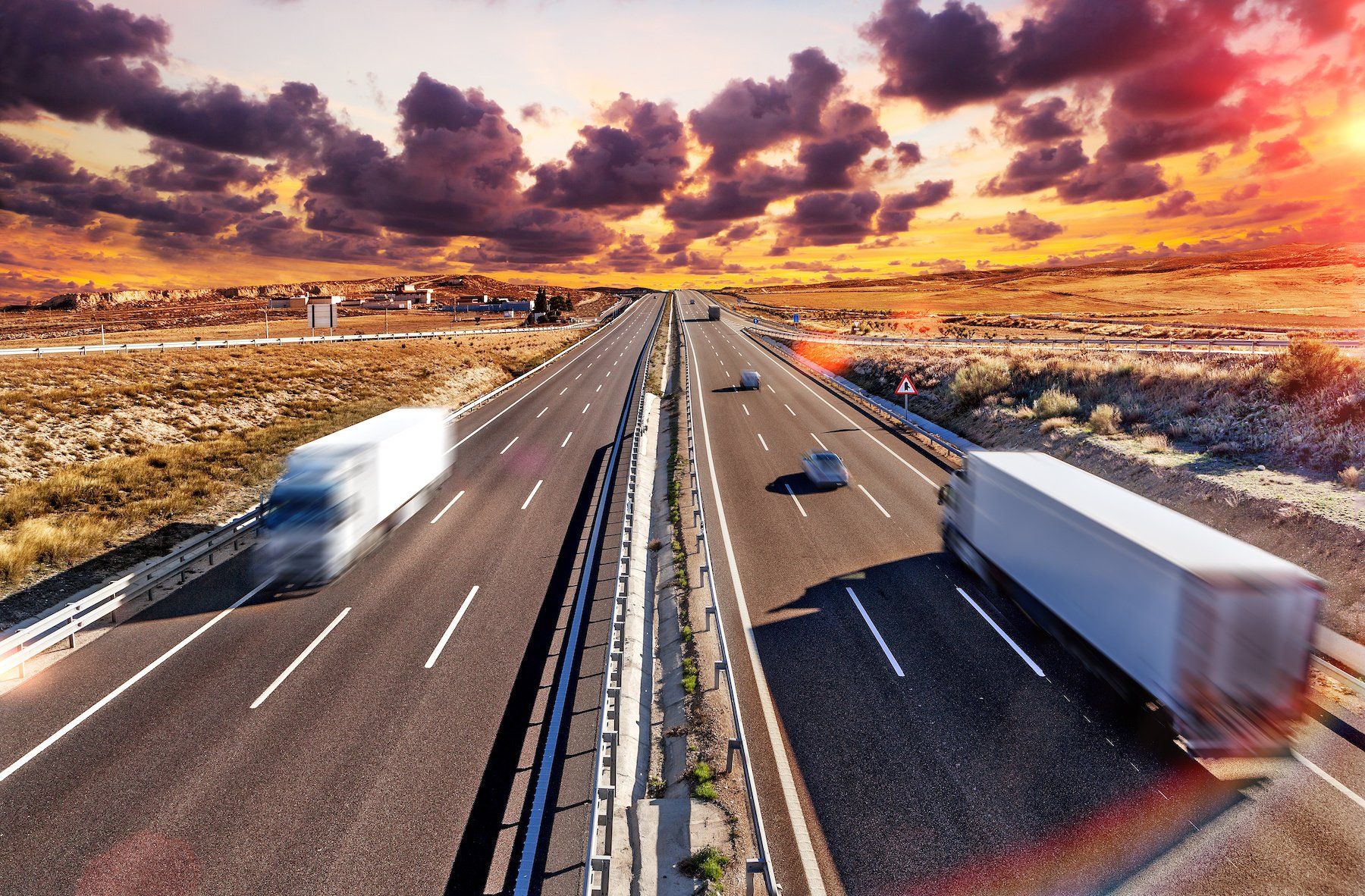
Deliveries that require heavy hauling services are no ordinary cargo. They require specialized trucks to move this heavy stuff from point A to point B. This cargo will often have to cross state lines and even international lines, which means going across highways, country roads, and cities. All of this is usually done under a tight budget and restricted timelines that require safety and efficiency to work together with no compromises.
The Challenges in Loading and Unloading Heavy Equipment
Before the cargo can go anywhere, it must be loaded into these specialized trucks and secured for travel. There are very specific restrictions and regulations set to ensure the safety of all involved during such travel. According to U.S Labor Statistics keeps data on the fatalities that occur while loading and unloading heavy machinery. This number indicates that at least nine workers are killed each year during loading and unloading from flatbed trucks and/or trailers. When looking into these types of accidents, it becomes clear that more often than not, it is the loading operators, grader, dozer, and scraper operators, and others that are most at risk. This is why KMJ specializes in the various aspects of heavy hauling, to ensure not only the safety of the equipment but of the workers and other drivers as well.
Here are a couple of tips when looking for a heavy hauler for your cargo.
#1 Knowing the cargo and details. The first step towards a successful hauling trip is to be well-informed about all aspects of what will be hauled.
A hauler worth their salt examines details and understands the cargo. This begins, for example, by knowing the proper dimensions and weight of the equipment. These details become important as other logistical concerns like the proper type of truck or other hauling equipment that might be needed.
#2 Choosing the Right Hauler. In other words, know what trailer is needed for the project at hand. When it comes to haulin’ there are typically several types of trailers used. These include dual lane, modular trailers, self-propelled, etc. For a guaranteed good haul, the right trailer needs to be used for the type of equipment in question. The selection of the appropriate trailers ensures the safety of the trip.
#3 Double Check Routes. The route is a big part of making the drop a success. A company that is experienced knows many different routes, ideal highways and roads, and all restrictions of oversized loads in certain streets. There are no shortages of construction projects and delays that can really set back a delivery. Doing the due diligence to ensure that roads are open, functional, and planning the trip around traffic hours can make the trip a success.
#4 Be Prepared for Drop Off/Pick Up Sites. Pick up and drop off locations are important because they will require certain infrastructure or equipment. Many times, it will require rigging equipment, cranes, and/or forklifts for loading. All of this requires budget, space, and time. Knowing details of the sites eliminates logistical errors.
How to Find the Right Company For the Job
So, if you have to ship heavy equipment, machinery, cranes, forklifts, and more, there are a couple of things you want to look for in the company you hire:
- Proper heavy haul licensing
- Proper shipping insurance
- Quotes with no hidden fees
- Highly trained drivers and logistics team
- Safe, well-maintained fleet and equipment
- Expertise in route regulatory requirements for wide or oversize loads
- You want to make sure the company has experience in hauling heavy cargo like:
- Construction equipment
- Heavy-duty truck hauling
- Forklift shipping services
- Crane transportation
- Aircraft transport
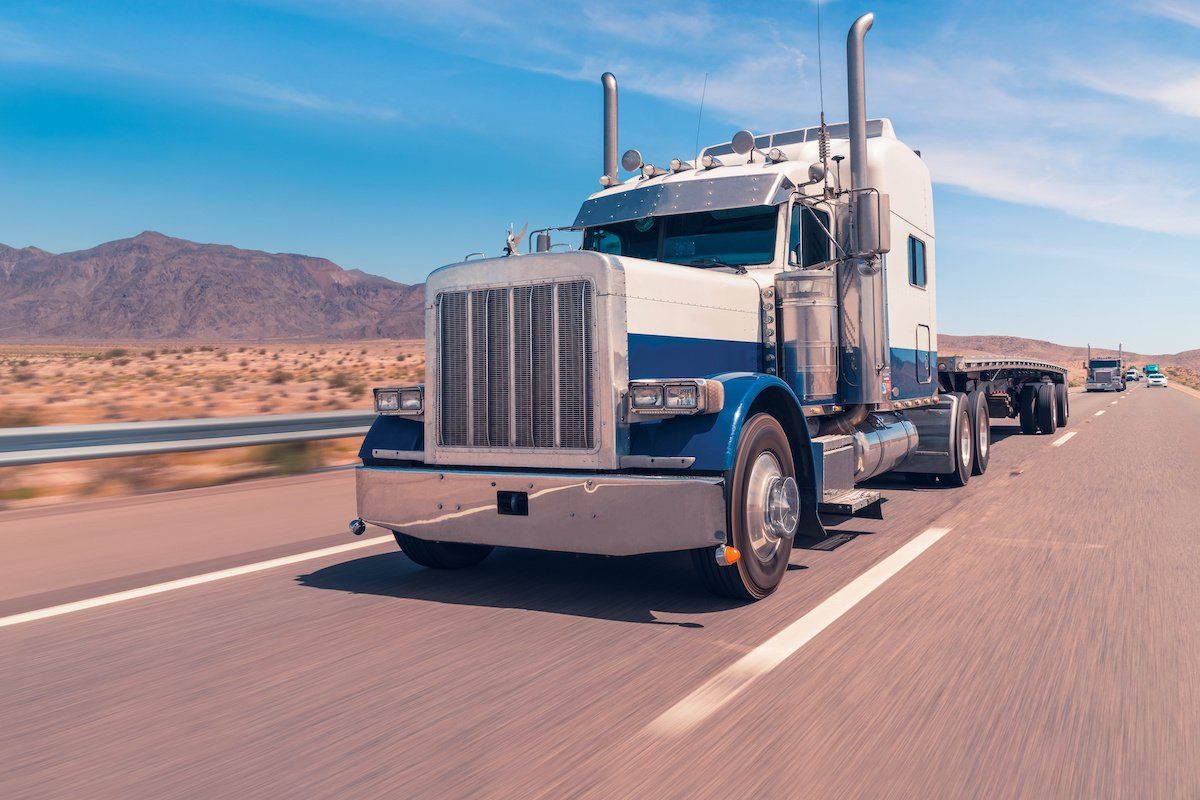
The implementation of new technology is a big part of maintaining safety standards and ensuring the utmost safety precautions for drivers on the road. Because of the increase in demand and the sheer amount of drivers on the road, various industries are working towards developing new ways to increase safety.
GPS Technology That Has Improved Trucking Efficiency
Just like the GPS systems and navigation systems in your personal vehicle, GPS technology has also made its impact in the trucking industry. In the dispatch center, GPS systems help central control know where a truck is at any given time and if they are likely to face any problems on the road. Knowing that there was an accident ahead, for example, and that the highway is closed (don’t we all love that) can help a truck driver avoid the problem area and keep the already-tight schedule.
Safety Technology That Has Changed the Game
Electronic stability control. This is a new addition to modern fleets that helps drivers with safety. ESC uses sensors to anticipate instability in the truck; it can detect an impending rollover, for example, and automatically adjusts the throttle and the brakes to prevent an accident. In June of 2015, the National Highway Traffic Safety Administration established a mandate for trucks to have this safety feature.
Anti-lock braking system. This marked a transition from passive to active safety in the commercial trucking industry. ABS—as it is commonly referred to— supports the driver during a braking maneuver in helping keep the vehicles stability and steerability. It prevents the brakes from locking and the vehicle from freezing up. When it comes to situations that involve slippery conditions, ice on the road, this can truly come in handy. It assists in circumstances where the driver increases deceleration demand, where road friction exists, and the speed causes wheel slip.
Collision Avoidance Systems. This technology comes in many forms and is often referred to as crash avoidance systems. The most common is the F-CAM. This stands for Forward Collision Avoidance and Mitigation. This technology has three components which work together to pump brakes and prevent non-ABS trailer brakes from locking. At the same time, the technology consists of alarm systems that alert the driver if they get too close to vehicles around it. By some estimates, these F-CAM systems can reduce rear-end collision fatalities and injuries by 50%.
Rear view camera and blind spot warning systems. In recent years several lines of rear view cameras have been introduced to the commercial trucking industry. Some of these cameras allow the driver to get an unobstructed view of what’s behind their vehicle. This will significantly cut down on accidents that often stem from drivers being able to see behind them. Blind spot warning systems were similar in that they alert the driver if there is another vehicle in the blind spot. This prevents lane changes or accidentally missing a motorist in this difficult spot.
Looking Into the Future — What is to Come in the Trucking Industry
Some technologies that are coming around the corner in the industry might also mean continuous changes to the way we operate vehicles. Despite all of this technology KMJ Transportation still has highly-equipped trucks with knowledgeable and experienced drivers.
Connecting Trucks Directly
The supply chain has changed in recent years, especially with the two day delivery and the increase of online shopping. After 2020, a year that had a lot of movement of goods across U.S highways, meant that trucks were ever more crucial in the supply chain. There is technology being developed that helps trucks be connected directly to the e-commerce warehouse. The coordination of data systems that can integrate distribution centers and vehicles will make management of the operation that much easier.
Tesla recently announced the new addition to their fleet. The Semi is Tesla’s latest attempt at a self-driving vehicle. That’s how far the profession has come! They claim to require the lowest energy cost per mile and have low energy consumption. Seeing this on our roads, of course, is still some ways into the future, but it is an indication of how far technology might take us one day.
If you’re looking for some heavy hauling, call KMJ Transportation today. We take safety very seriously and always improve our fleets to ensure the utmost productivity and delivery.
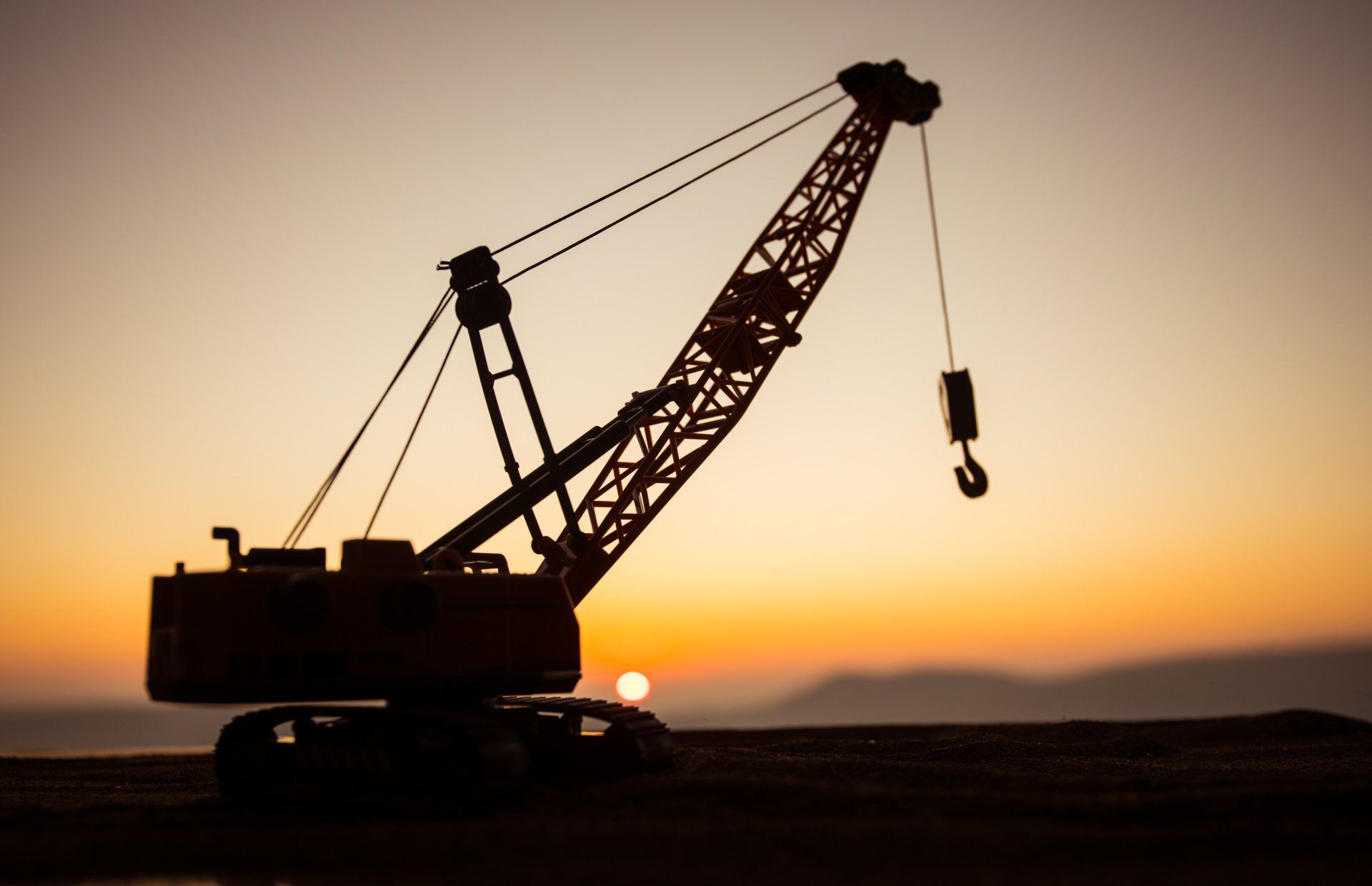
The very powerful crane is ubiquitous in construction sites and heavy-duty jobs of all kinds. It is the modern day workhorse—albeit with years of technological innovation on its haunches. This wonderful invention is built to carry heavy loads and increase efficiency in any construction job. From the historical depths of the ancient Mesopotamians to Romans, to the industrial revolution across the western world, the crane has seen its fair share of lifting and tugging. So how do you know which crane is necessary for your project?
Modern day’s incredibly advanced cranes can move up to 1,200 tons. That’s a lot of weight! And it sure comes in handy for difficult and massive projects that require that much hauling power. Yet, you might not need that much force and can do with something a little more lightweight.
A Quick Overview of the Crane from Ancient Times to Today
Humans have always been interested in how to manipulate and rearrange their environment. So from very early stages of civilization, we can find beautiful structures.Take Stonehenge or the Egyptian Pyramids. And yes, if you visit these sites you are automatically taken by their brilliance and the incredible human feat done before any technology.
As people understood hydraulic principles, the hydraulic press came into being and settled as the building block of modern hydraulics. As the industrial revolution got underway and steam became a go-to source of power, hydraulics really got underway.
In early days of the crane, they were used in mines, harbors, and, of course, building sites. The treadwheel was recorded as weary as the 1300s in England.
The Ultimate Lifting Buddies
It’s almost guaranteed that any construction project will require some form of lifting, halting or transportation of heavy materials. This goes without saying. Cranes play a vital role and knowing which one is the best can help the efficiency of the project and your budget. The modern crane is a fantastic piece of equipment which uses simple systems that allow you to achieve complex and seemingly insurmountable tasks. Each crane, however, is designed for different kinds of tasks and construction projects.
Mobile cranes: These are standard operating vehicles at any construction site. They are perhaps the most basic and straightforward of the lot. It consists of a steel truss or telescopic boom mounted on a mobile platform, which could be a rail. These guys do not need a huge amount of space and are cost-efficient in a variety of ways.
Tower cranes: These are commonly seen in many construction sites today. They are big T looking things and are hard to miss. They rise hundreds of feet up in the air and reach out just as far. The tower crane is used to lift steel, concrete, large tools like generators, and other heavy lifting materials. These bad boys can climb the building as it rises. So as your structure rises in height, the tower crane follows. There are some lifting operations, however, that might not be able to use a tower crane and something more mobile like the mobile crane will be the right choice.
Vehicle Mounted cranes: These guys are mounted on rubber tire trucks and offer excellent mobility along any construction site. If you need something that needs to be pretty flexible, the vehicle mounted crane might be the one, as it can even travel on the highway without a special vehicle. They are made mostly for lighter jobs, perhaps not exceeding anything above 50 tons.
Crawler cranes: These good looking machines are mounted on a caterpillar track. This gives them plenty of mobility. In contrast to a hydraulic crane or truck crane, this one does not have outriggers. It’s arm is a lighter lattice structure that is pretty mobile. Because it is a lighter lattice structure, it can lift much more.
Rough terrain crane: The name says it all with this guy. If you’re looking for a lifting buddy that can navigate tough or uneven terrain, this is your pick. These guys have excellent ground clearing and different steering mode that allows you to position them in rough ground.
After years of technological advancement and improvements, cranes have become a must-have in every construction site. They allow us to increase the load capacity, are easy and safe to navigate. These guys don’t often get the credit that’s due. After all, they help build almost everything we see around us.
Here at KMJ Transportation we can help you make the right choice for your construction job. If you’re looking for a crane to rent for a construction project, give us a call.
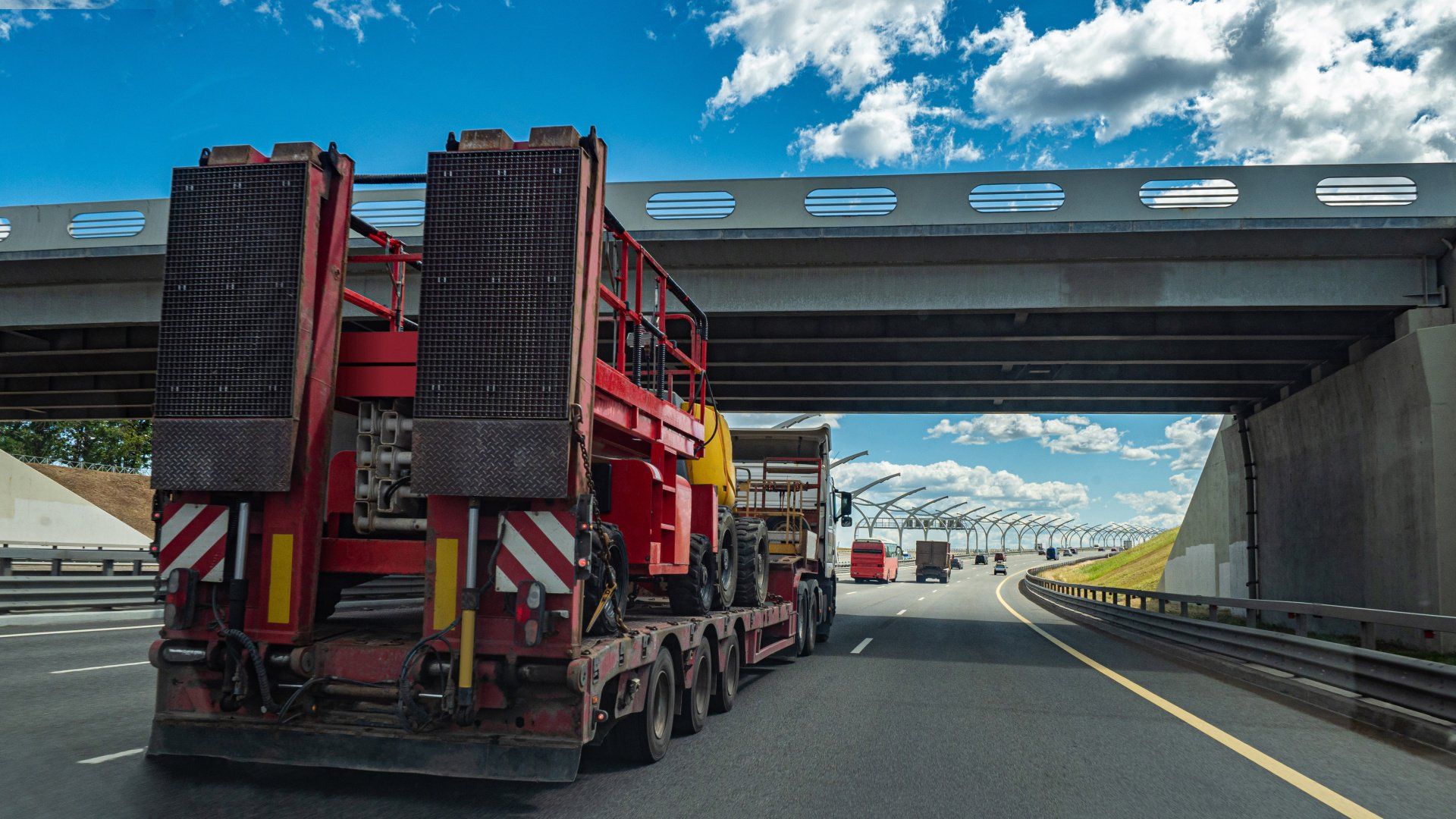
When transporting large freight—and we’re talking big— there are many challenges to overcome. Still, it is a necessary part of many industries to have to haul heavy equipment or materials from one point to another. Anything that requires heavy hauling might be military equipment, large industrial machinery, construction materials or equipment, and more. As you know, normal forms of transportation don’t suffice when it comes to this, especially not on public roads. This is when you need heavy hauling services in order to ensure that your equipment or materials are transported safely and follow all the guidelines and regulations of the road.
The federal government sets certain rules when it comes to the transportation of heavy equipment. Each state might have its own set of guidelines as well. They state that a shipment should require heavy hauling services if it exceeds a width of 8.6 feet, height of 13. 6 feet, length of 48 to 53 feet, and gross weight of 80,000 pounds.
Around the 1950s and 60s transportation vehicles were getting heavier and hauling much heavier freight. Many regulations, thus, were set to protect bridges and other road infrastructure that might be set to withstand only a certain amount of weight.
This resulted in the setting of limitations on a per-axel basis:
-
Steer axles may carry no more than 12,000 pounds
-
Single axles may carry no more than 20,000 pounds
-
Drive axles may carry no more than 34,000 pounds
-
Tandem axles may carry no more than 34,000 pounds
As part of heavy haul services and complying with the road regulations, there are a variety of accommodations and requirements that we’re required to meet. By law, any transport vehicle carrying a heavy load must, in fact, carry signage that warns and informs people of this fact. Some travel requirements might include:
-
Safety flags
-
Oversize load banners
-
Specialty lights
-
Pilot cars
-
Police escorts
This depends, of course on the size of the load and where and how it is traveling. You’ve likely come across this on the highway once or twice and seen the bright yellow banners that announce this is an oversized load. At the same time, as heavy haul transportation services, we take care of retrieving the permits necessary for the transportation of some of this heavy equipment. Some of these permits might be local, state, or national and might include the time allowed to travel, travel restrictions based on seasons or holidays, and operating hours in which to transport.
Types of Vehicles Used for Heavy Hauling
Heavy Duty Trucks
These are what are often referred to as the ‘big guns.’ They do a lot of heavy work and they are reliable, long-lasting, and powerful. The engines on these bad boys require big torque and substantial horsepower that is up to the task of hauling around up to 150,000 lbs. At the same time, you want a heavy duty truck that is equipped with safety measures and features. For example, air disc brakes, top-of-the-line stability and traction control.
Heavy Duty Trailers
Just like the truck, the right trailer makes all the difference. The trailer plays an important role in storing and protecting your valuable tools and equipment. Heavy duty trailers will vary in capacity from 35 to 85 ton capacities and axle configurations of 6 to 13 axles.
Flat Beds
The flat beds are an indispensable vehicle for the purposes of heavy hauling. The design of the flatbed and its hauling capability allows you to carry significant weight across significant distances. You have likely seen these on the highway. Whether you are in construction, transportation, or general manufacturing these trucks are a vital part of fleet operations. Some of the common uses for flat beds include: tires, miscellaneous construction and building materials, scrap metal, equipment hauling, and more.
Multi-axle trailers
These bad boys are also great for those heavy hauling jobs. They are specifically designed for an oversized or over-dimensional load. They are called ‘multi-axle’ because the weight of the load requires more axles to help disperse the weight throughout the vehicle and make it easier to haul.
Double-drops
A double-drop trailer can ship from 41,000 to 43,000 pounds or more. It is used for oversized freight. They can carry cars, trucks, tanks, and forklifts.
Transport Safely and Effectively with KMJ Transportation Services
Part of what we do is specialize in hauling heavy equipment and materials from one location to another. We do this through our specialized vehicles and expertise. We also know how to safely move some of this stuff. There is no room for error when moving 100.000 pounds of equipment on the road with other vehicles around. Here at KMJ Transportation Services , you can count on safety and efficiency as our main operating procedures.
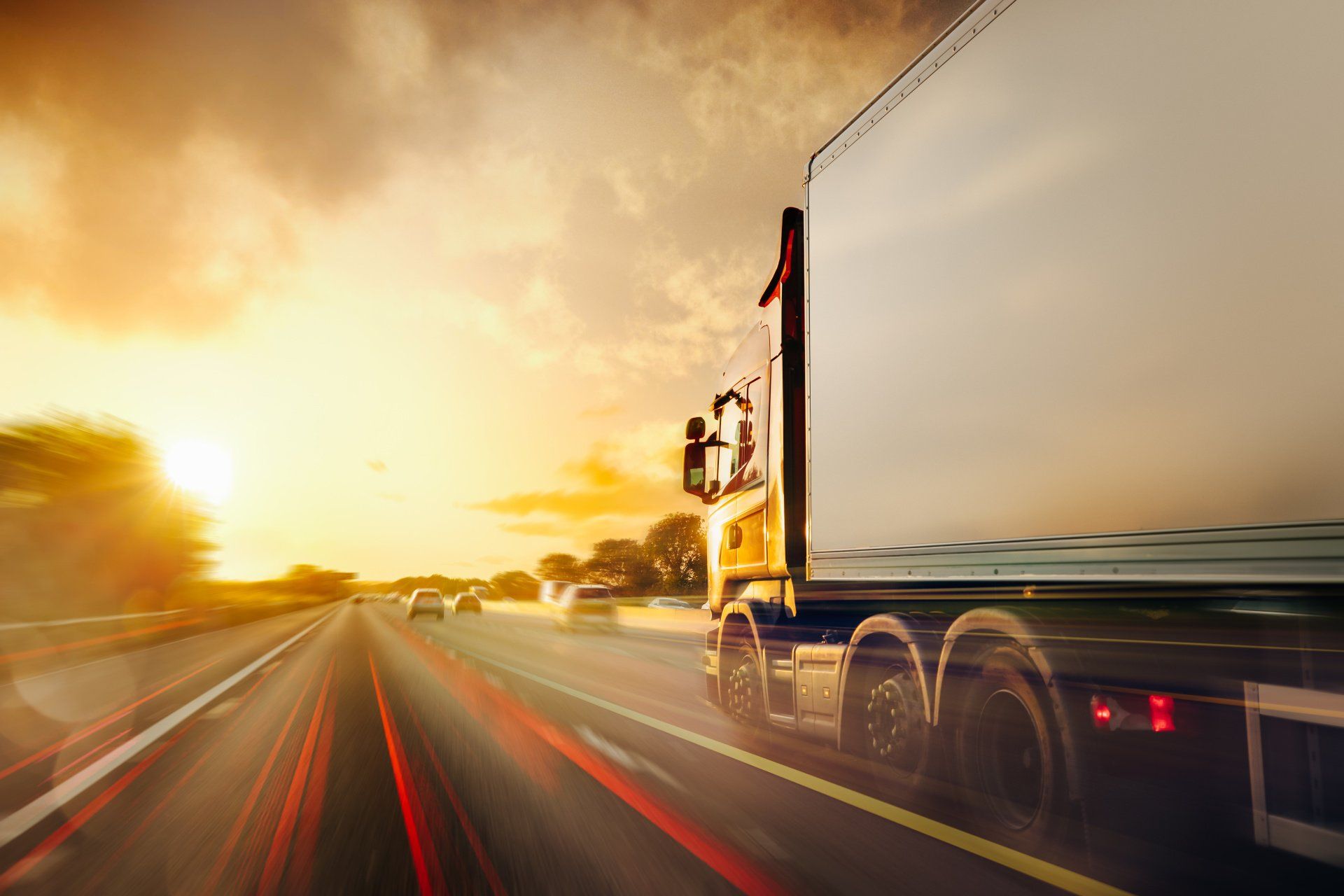
Trucking is such a basic part of our economy. So we thought we’d take a look at the industry and how it is working in these times of uncertainty.
The trucking in the United States had a major economic impact when it came about. Before automobiles, most freight was moved cross country through trains or horse-drawn wagons. In 1912, there were about 10,000 trucks in the whole country, and as motorized trucks became more accessible and available, railroads began to lose business. It was around 1912, that trucks were equipped with lights so they could be driven at night. Slowly, the trucking industry became the main way that items were shipped.
The National Interstate Highway System definitely played a role in the expansion and development of the industry. It made it much easier for these vehicles to get across.By then, automobiles and trucks had developed and the technology had improved enough that long distance hauling was possible.
After World War II, the expanding interstate system allowed for larger vehicles to get on the roads. This, of course, came with its fair share of government regulations. Federal standardization of weight limits and bridge limitations were needed. Then came the containerized trucking. Thanks to these shipping containers, this meant that cargo could go from the ships, traveling across the oceans, and then be transferred onto the bed of a truck for its continued journey without being opened.
The Trucking Industry During Economic Hardship
As the virus continues in the country, truck drivers and transportation services continue to be necessary for the American movement of items on our highways. Across the nation, 3.5 million professional truckers are working hard to make sure that stores and small businesses remain stocked. The industry transports more than 10 billion tons of freight annually. This accounts for more than two-thirds of the total freight tonnage that is transported annually.
Consumers across the country are worried about riding out the quarantines that seem to have no definite end as of now. There has been a high demand for toilet paper, rice, beans, tuna and other canned goods.
It is thanks to these millions of truckers that grocery stores have remained stocked and operating throughout this pandemic. Many truckers say that they are not overly concerned about getting sick. Their job does not require that much interaction with others but it does require close contact with shipments that may or may not be contaminated. One aspect that not many people are talking about, is the fact that closed dining areas and shops are not allowing truck drivers to stop by and have a cup of coffee and dinner at the truck stops. Many can only pick up, drive through and eat in their trucks. In many places, according to USA Today, many have been left without places to sleep, as dozens of rest stops were closed in Pennsylvania, Nebraska, Texas, and Michigan.
Truckers have a great responsibility on their shoulders these days. They are tasked with moving a tremendous amount of goods.
The Trucking Industry in the 21st Century
The 20th century saw a lot of changes to the trucking industry and improvements in terms of the vehicles themselves. Trucking companies with an aging fleet have replaced their trucks and have adopted a more carbon friendly low mileage vehicle. Increasing competition in the 2000s did cause some companies to fold. Yet, despite the changes and all the technological advancements, the country still largely depends on these truckers to transport their goods across the country. GPS tracking has also really changed the way that truckers operate, as it allows for instant status updates on location. Electric logs are also commonly used.
Choose a Transportation Service You Trust
The country will soon emerge from the dark times that we find ourselves in. In the meantime, truckers across the country continue transporting the necessary goods for people to be able to find what they need in their stores.
KMJ Transportation is an industrial contractor that helps companies across the U.S and Mexico with trucking, hauling, and other industrial services. When it comes to transporting heavy equipment or machinery, choose a transportation service that you trust to be efficient and safe with the cargo.
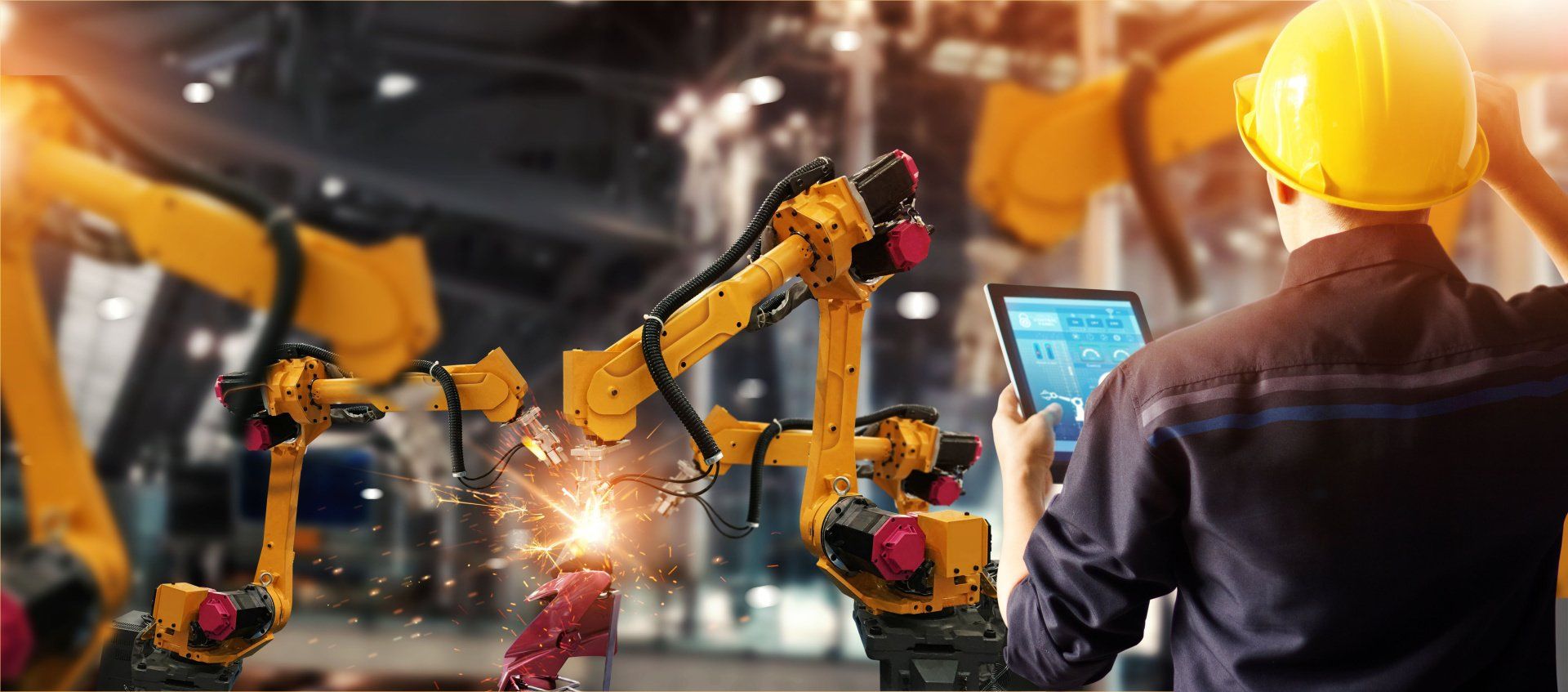
A Couple of Notable Inventions of the Mechanic Kind
The Wheel and Axle
Ok, let’s start by taking it all the way back. We all know that the invention of the wheel helped civilization in countless ways and spearheaded the inventions of a lot of other advancements to aid construction and the movement of heavy objects. So the wheel was once part of the equation. The other part was the axle. In tandem, these two work together marvelously and thanks to the holy matrimony of the two, it has been fundamental to subsequent human inventions.
The Wright Airplane
In an incredible feat of engineering, the Wright brothers were the ones that had the first successful flight in human history. They were not the only ones, of course, tinkering with the idea of flight and the conviction that human beings could fly. After many failed attempts and funding troubles, the Wright brothers succeeded in getting one of their models up in the air. The Wright Flyer was the final push needed to kickstart the pioneer era for human flight.
The Printing Press
This small and relatively simple (by today’s standards) machine, single-handedly altered the course of the West. It was through this great little machine that the printed word became available to hundreds and thousands of people, spreading different ideas throughout the world. The press revolutionized the way that the world printed books. It drastically reduced the cost, increased productivity, and made education more attainable. It was here that newspapers and journals began and the idea of a free press eventually came to be in places like America.
Heavy Duty Construction Equipment and How it Came to Be
The Backhoe
This fine piece of machinery is a widely used heavy-duty machine used widely for multiple purposes on construction sites and industrial plants. It is useful for excavating trenches below the machine level and using front bucket loading and unloading. The precise invention of the backhoe has been disputed but one of the pioneering companies behind this piece of equipment was Wain-Roy in Hubbardston, Massachusetts. There have been some disputes because of patent confusion and contentions that there actually companies overseas that were initially responsible for the backhoe. Companies like Case and JCB began tinkering with similar ideas from across the pond.
The Bulldozer
When people think of heavy industrial equipment, they likely picture a bulldozer. Yup, it comes from the bull. As it turns out, bulls have a habit of pushing their less-strong rivals backward during contests of strength or mating. The term ‘bull-dosed’ was also used as a colloquial term to mean giving someone a mighty dose of what they deserved, or punishment, or medicine. The term referred to a dose of bull. Bull-dozing someone meant you gave them a physical or figurative whipping.
The term bulldozer refers to the shovel-like blade. People today typically associate the entire vehicle with the name. This old favorite has quite the history as well. It’s not certain who invented the very first bulldozer, yet the bulldozer blade was in use way before. Just like with the Backhoe, there are disputes about who actually used the first powered bulldozer and put it to action. The Caterpillar Tractor Company was one of these early contenders. Benjamin Holt —usually associated with the first bulldozer—merged with his rival company C.L.Best Gas Tractor Co in 1925. The name caterpillar had been coined long before by a photographer who noticed that from up top the machine moved and looked like a caterpillar.
Hydraulic Excavator
Hydraulic excavators are extremely useful in today’s construction world. The history of this can be traced back to the mid 19th century. William Otis was an engineer that developed the steam shovel. The idea behind the Otis shovel was to increase efficiency and use the power of steam to do so. Otis’ target industry was the railway industry and later developed the steam excavator, which became the first bucket excavator.
Heavy Equipment Hauling and Other Services
KMJ Transportation Services, LLC is in the business of transporting some of these incredible machines from one place to another. As you know, all construction or heavy-duty equipment requires special care when it comes to moving it from one place to another. We know what these machines are worth and how they make our day-to-day construction jobs easier. Pick a transportation service you can trust and give us a call today.

All industrial plants have many moving parts. There are dozens of machines, machine parts, and other necessary equipment required to make your day-to-day operation successful. Anything from your heavy duty trucks, trailers, cranes, forks and more. Ensuring that your plant is relocated successfully requires a lot of coordination and planning in order to keep track of the necessary equipment. Moving—and at times disassembling—all of these pieces of equipment and machine means that you are entrusting us with your business's livelihood. Here at KMJ Transportation, we specialize in the packing up and transporting of your entire plant. Regardless of the reason for your plant relocation, the experts at KMJ Transportation will take care of it. And so how do we ensure a successful move? Let’s take a look at some of the main components of a successful move.
If you’ve ever had to move from one city to another, or even one home to another, you know that there are always unforeseen complications or issues that arise. Maybe the couch fals apart as your moving it, or some of the furniture is difficult to transport, or maybe the truck breaks down in the middle of the road. When moving a full industrial plant from one location to another, all of these unforeseen events can still happen, except on a much larger scale and much higher stakes.
There are several phases involved in any relocation project. Some of these include:
-
Analysis and planning
-
Custom crating
-
Testing and dismantling equipment
-
Equipment deconstruction
-
Rigging and load out
Much of the key to a successful move, is having experts to back you up and guide you through the process. As transportation experts, we have done every type of plant relocation you can imagine and our expertise lies in making these complicated processes work smoothly and quickly.
Our goals when leading your plant relocation:
-
Safety: The safety of your employees and our is our top priority. It’s why we have professionals that know the job and know how to work and dismantle heavy equipment. We take all safety precautions and follow safety protocols to ensure things are packed or stacked safely.
-
Efficiency: We help you and guide you with the planning aspects of the move but as we have the schedule, we make sure to move efficiently. We know what equipment to store first, what to pack, etc. all according to the planning and schedule we have created.
-
Timeliness: As we move and pack machines, materials, and other heavy duty industrial equipment, we work quickly and in an effective manner. Because we are efficient in our planning and accurate in our risk assessments, we can progress according to schedule. At the same time, our experience gives us the ability to deal with issues or unforeseen problems that may arise.
-
On budget: We know that time is money. We know that your equipment is money. Everything that is inside of your industrial plant took work and sacrifice to obtain. It’s why we spend a considerable amount of time in the planning and scheduling stages so that we are able to move effectively and stay on budget. Having an order and specific process allows us to better foresee any delays, problems, or etc.
The key lies in the planning stage. During this stage, we make sure that we work with you and your office manager or coordinator to establish good communication and work to build a comprehensive and reasonable schedule.
Assessing potential risks. As part of the planning stage, we make sure to conduct a risk assessment. Understanding the risks that exist will help you avoid potential risks and having an accident or causing damage to your equipment, inventory, or ongoing projects. So we start by assessing potential risks that could threaten the schedule, cost, or successful outcome of the relocation.
Reviewing your new layout. Before anything gets moved, it’s important to consider the new layout. This will provide plenty of information about how to plan and schedule the movement of certain equipment. Understanding and planning around the new layout will help you figure out how much space you have in certain areas, where jacks and outlets are located, and where docks and other important entry points are located.
Checking all equipment. Performing a full review and check of all your equipment. A lot of times this will bring to light issues with certain machinery or equipment. It can be a good time to decide whether you should replace certain malfunctioning equipment, rather than lug around heavy machinery that no longer works.
Scheduling and relocation timeline. This is where we come in and where we can help you better improve the process. The schedule itself is one of the key components of a successful relocation. We, of course, work with you to figure out what is most convenient with your company and better suits your needs and current ongoing projects.
Relocate With Peace of Mind With KMJ Transportation Services
No matter how big or small your industrial plant is or how much equipment you may have, KMJ Transportation Services can help you pack and relocate to your new facility location. We are here to show you the way towards a smooth, efficient, and on budget plant relocation.

